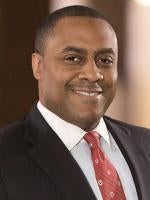Last week, we placed the union recognition effort of Northwestern University’s football players as the No. 1 seed in the Midwest Region in our blog entry of issues that may change the face of the Final Four. That issue has now certainly cemented its No. 1 status. In a decision with extraordinary ramifications across college athletics, the NLRB’s Regional Director in Chicago ruled that Northwestern University’s scholarship football players were employees under the National Labor Relations Act and an appropriate bargaining unit for a union election. While this decision is a sure bet for appeal before the full Board, and potentially federal court, this post addresses the ruling’s underlying legal issues and what colleges should do to reinforce the standing of the student in “student-athlete”.
In a twenty-four page decision, the Chicago region of the NLRB stated what numerous big-time college athletes have said for years – they were employees and the playing field was their office. The ruling gives significant weight to (i) the athletic grant as a direct financial transaction for services, (ii) the significant time commitment required of student-athletes for participation in football at the FBS subdivision level, (iii) the separate set of rules and policies governing these players, for which noncompliance could result in the loss of athletic scholarship, and (iv) the accommodations given to athletics to facilitate the academic schedule of players.
The ruling allows a union election to proceed for Northwestern’s football players receiving athletic scholarships and that have remaining playing eligibility. As part of the election, those players will also decide whether the College Athletes Players Association (CAPA) will represent them for collective bargaining purposes. Not surprisingly, the University has already announced its intent to appeal.
We previously addressed some of the ramifications if this decision is upheld and a collective bargaining unit is approved. However, a reading of the tea leaves leads to the conclusion this will not be the final and definitive word on college athletes as employees. In fact, the decision should be read as a clear warning shot to the NCAA and its member institutions that there is much work to do in clarifying the academic-athletics nuance for student-athletes.
One of the most scathing lines of the decision is the following:
“The record makes clear that the Employer’s scholarship players are identified and recruited in the first instance because of their football prowess and not because of their academic achievement in high school.”
This statement has to bother an elite academic institution like Northwestern. While no one would seriously contest that ability off the field attracts college coaches to students, the students’ ability to discharge their academic obligations is not a throwaway function. In fact, this assessment is a mandatory obligation of the NCAA member institutions.
As the NCAA would gladly point out, there is a tidy 50-plus page section of its bylaws dedicated to academic and general eligibility requirements. Simply put, one must be a student in sufficient academic standing and progress towards a degree in order to practice, compete or even receive athletic-based financial aid. This is relevant, as a leading decision before the NLRB regarding employment status in the academic setting found the requirement of being a student to receive compensation to be material in a ruling that had a completely different conclusion.
Ten years ago, the NLRB took up the issue of whether a collective bargaining unit could be formed of Brown University graduate students serving as teaching assistants, research assistants, and proctors. The NLRB determined the proposed bargaining unit functioned primarily as students and therefore would not approve it for collective bargaining. Interestingly, the Northwestern decision states that the Brown ruling was not applicable, although it concludes it would have reached the same result even if it were.
One wonders if Northwestern’s football program were not operating at a multi-million dollar profit margin whether the comparison to paid graduate assistants would be more easily understood. In any event, the fact remains that there is a significant and required component from the academic side that every athletics department must have. Unfortunately, the identity and purpose of that person is the best kept secret in college athletics. He or she is known as the FAR or the Faculty Athletics Representative.
In its Handbook for the Faculty Athletics Representative, there is a requirement that he or she be involved in the assurance of the academic integrity of the athletics program. This function is essential in assuring the university’s academic purpose is carried out in its athletics program. For this reason, the FAR must have regular and direct access to the President’s office and not be seen as an instrument of the athletics program. Along those same lines, a wise strategy (which is unclear if it was followed at Northwestern) is that oversight of all academic counselors for student-athletes should be moved away from the athletics department. Establishing the appropriate dotted-line relationships for those persons with athletics and academics functions is not just good sense for compliance reasons, but it may have helped with the underlying concerns that led the Northwestern football players to seek union recognition in the first place.
One can hope that the beauty of March Madness does not one day become harmed by conflict from a future impasse in collective bargaining negotiations. But as of today, for the first time, a group of college-athletes can point to a regulatory body that has recognized them as paid employees.



 />i
/>i

